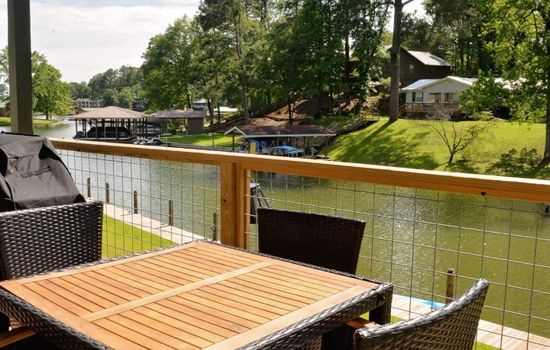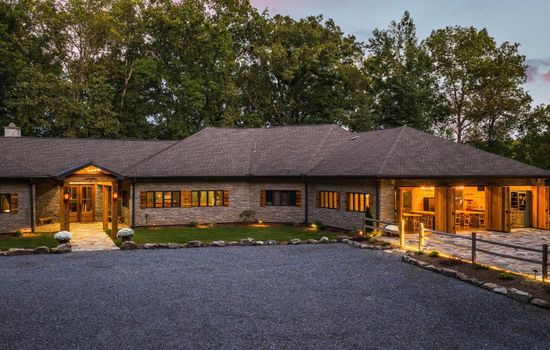The Visitor Center at Horseshoe Bend National Military Park is open Wednesday through Sunday from 9 AM to 4:30 PM, closed on Mondays and Tuesdays, and also closed on Thanksgiving, Christmas, and New Year’s Day.
There is no entrance fee at Horseshoe Bend National Military Park. Admission is free for all visitors.
From Auburn, take Interstate 85S to Exit 58, then US 280W towards Dadeville. Turn north onto Highway 49 and travel 12 miles to this historic battlefield, nestled in Alabama’s scenic countryside.
At Horseshoe Bend National Military Park, parking is available near the Visitor Center and main parking lot. It accommodates cars and smaller RVs, but not large RVs or buses. There are no parking fees, and overnight parking is not permitted. Motorcycle parking is also available.
Accessibility & permits
Emergency
- Cell service availability:Partial
Information not accurate?
Help us improve by making a suggestion.
Horseshoe Bend National Military Park, situated in the heart of Alabama, is a poignant and historically rich destination that intertwines the beauty of nature with the significance of American history. This 2,040-acre park is centered around the Tallapoosa River, where the final battle of the Creek War of 1813-14 took place, marking a pivotal moment in the War of 1812.
The park’s landscape is defined by the serene bend of the Tallapoosa River, surrounded by rolling hills and dense forests. A 2.8-mile nature trail winds through the battlefield and near Tohopeka Village, offering a immersive walk through history and nature. The trail is flanked by native flora, including oak and pine trees, and is home to a variety of wildlife such as deer and birds.
Each year, the park comes alive with special events. In March, a living history event commemorates the battle anniversary, featuring Creek, Cherokee, and military camps reconstructed behind the Visitor Center. August brings a free symposium with Alabama historians, delving into themes connected to the park.
Visitors can explore the battlefield via an auto tour road or on foot, stopping at significant sites like Cotton Patch Hill, which offers a vivid view of where General Andrew Jackson’s army first arrived. The park’s Visitor Center, featuring an auditorium and an updated museum, provides deeper insights into the causes and consequences of the Creek War.
Nearby, the charming towns of Dadeville and Alexander City offer a blend of local artisan shops and historic charm. For those seeking outdoor adventures beyond the park, local outfitters provide opportunities for fishing and boating on Lake Martin, just a short drive away.
Horseshoe Bend National Military Park is a free and accessible destination, inviting travelers to delve into its unique blend of natural beauty and historical significance, making it an unforgettable experience for those seeking a meaningful and enriching journey.
- Area (mi²)
- 3.2
- Annual visitors
- 72 725
- Established year
- 1956
Top 3 Facts about Horseshoe Bend National Military Park
The battle site features a 400-yard long barricade made of dirt and logs built by the Upper Creeks to fortify their position against General Andrew Jackson’s forces.
In this verdant sanctuary, white-tailed deer and wild turkeys roam freely, while armadillos and coyotes make rare, nocturnal appearances. The air is filled with the songs of Eastern Bluebirds and the soaring silhouettes of Mississippi Kites. Along the waterways, Ospreys and Bald Eagles patrol, and wood ducks glide silently. The landscape is adorned with black-eyed Susans, dogwood trees, and the rare yaupon holly, offering a tranquil retreat from the Alabama heat.
Amidst the southern Piedmont, ancient metamorphic rocks sculpt the landscape. The Emuckfaw Group’s coarse-grained muscovite schist, with euhedral garnets up to 1 cm in diameter, weather to a deep red-maroon hue. This terrain, shaped by orogenies over 300 million years ago, presents a rugged beauty where garnets oxidize to dark brown, adding a rich tapestry to the area’s geological narrative.
Family programs
- Junior Ranger
- Self-guided Tours
- Workshops & Hands-on Activities
- Living History & Cultural Demons
- Scavenger Hunts
- Family Camping & Overnight
- Arts & Crafts
Travel Tips
Plan Ahead
Plan a half-day visit, ideal in spring or fall. Start at the visitor center for the 22-minute film and museum. Take the 3-mile auto tour, and prepare for some walking on paved and rocky terrain. Pack a picnic lunch and rest at scenic spots. Attend a reenactment event for added historical depth. Limited dining options nearby.
Pack Appropriately
Pack layers for changing weather, sturdy footwear, sunscreen, and a waterproof bag. Bring a map, first aid kit, and hydration for day trips. For camping, add a tent, sleeping bag, and bear-resistant containers. Check the season for additional gear like warm hats and gloves or rain jackets.
Respect Wildlife
Keep a safe distance from wildlife, at least 25 yards, to avoid stressing them. Never feed animals and dispose of trash properly to preserve their natural habits. Stay on designated trails and respect the environment. Enjoy the unique flora and fauna without disrupting them.
Stay Informed
Stay on marked trails, exercise caution near ledges and water, and check weather conditions and fire restrictions. For emergencies, call 911 or park authorities at 928-608-6200.
Seasons
In spring, mild temperatures (60s-70s°F) and blooming wildflowers make for a perfect visit. Attend historical weapons demonstrations and living history celebrations in March. Ideal for hikes and outdoor exploration, though currently closed due to storm damage. Check for updates.
Summer brings warmth (80s-90s°F) and humid days, ideal for hikes and historical weapons demonstrations. Attend summer lectures and living history celebrations, but note current closure due to storm damage. Check for updates before visiting.
Visit in fall, with mild temperatures (60s-70s°F), to enjoy the scenic beauty and historic significance. Attend the August symposium or the living history event in March, though the latter is less likely in fall. Light jackets recommended for cooler mornings and evenings. Ideal for history and nature enthusiasts.
Visit from January to February for a serene winter experience with average highs below 61°F. Crisp air and potential snow add a mystical layer to the historic battlefield and scenic trails, making it an ideal time for a peaceful and immersive visit.
Information not accurate?
Help us improve by making a suggestion.
Where to stay
Frequently Asked Questions
Ready to dive into what Horseshoe Bend National Military Park has to offer? Let’s tackle some of the burning questions you might have as you plan your visit!
-
The closest city to the park is Dadeville, Alabama, which is about 12 miles south of the park. The town of New Site is also nearby, located about 5 miles north of the park.
-
Dogs must be on a leash no longer than six feet at all times.
-
There are no parking fees or entrance fees. You can visit and park your camper, trailer, motorhome, or any other vehicle without any additional charges.
-
The Battle of Horseshoe Bend, fought on March 27, 1814, in what is now central Alabama, marked the end of the Creek War and Creek resistance to American expansion. Led by Major General Andrew Jackson, the U.S. forces and their allies defeated the Upper Creek, or Red Stick, warriors, resulting in the Treaty of Fort Jackson, which forced the Creeks to cede over 20 million acres of land to the United States. This victory brought Andrew Jackson national attention and contributed to his later election as president in 1828.








